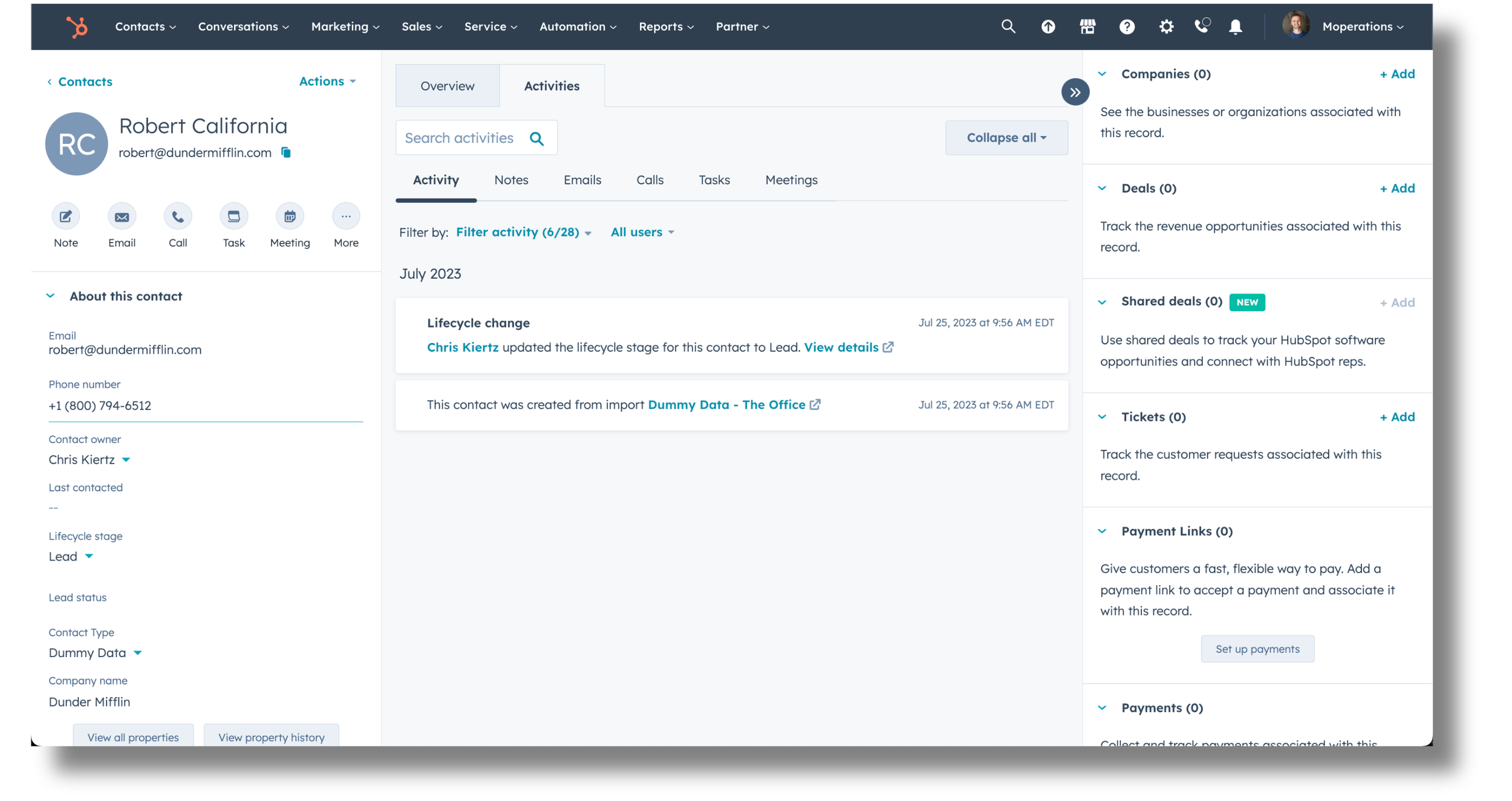What's the difference between the contact object and the company object in HubSpot?
Over the years, HubSpot has built one of the most powerful marketing automation and CRM platforms on the market. This gradual product expansion has resulted in the introduction of many different types of “objects”. But if you’re just getting started, the two most important objects to familiarize yourself with are contacts and companies.
Contacts: The foundation of HubSpot
The contact object is the single most important object in HubSpot because it represents people, and people are the ones interacting with your business. Some of the most common fields that are captured on a contact are:
First name
Last name
Email address
Phone number
Job title
Company name
The contact record will also display all interactions they've had with your business, including:
Form submissions
Website page visits
Email engagements (deliveries, opens, clicks, etc.)
Scheduled meetings
Lifecycle stage changes
Workflow and list enrollment
Contact creation information (ex. original source)
Associated objects like companies and deals
Tasks
Contacts are at the heart of HubSpot’s marketing automation and CRM functionality, and this object is used to track and manage interactions with your prospects and customers. You can associate contacts with companies, deals, tasks, notes, and other related data.
*Note - If you’re using Salesforce as your CRM, the leads and contacts in Salesforce all map to the contact object in HubSpot. There is no lead object in HubSpot.
Companies: The big picture
While we can’t overstate the importance of contacts in HubSpot, companies play a pivotal role as well. Generally, contacts are employees at companies, and we need to track this association in our CRM. While the contact object allows us to look at how individuals interact with our business, the company object allows us to see how everyone at that company interacts with our business. It tells the bigger story.
If you haven’t guessed it already, the company object in HubSpot represents a business or organization. If you come from the Salesforce world, you know it as the account object. It contains unique information about the company, as well as firmographic information.
Some of the most common fields at the company level are:
Name
Domain name
Industry
Address
Annual revenue
Number of employees
Lifecycle stage
The company record will also display important interactions that you’ve had with associated contacts of the company, and key changes to the company’s status in your CRM. Some of the most common activities you’ll see on the company record are:
Meetings scheduled
Form submissions
Deal activity
Workflow and list enrollment
Lifecycle stage changes
Sales documents
Tasks
It’s important to associate contacts with a company so that you can easily see the relationships between the individuals within the organization. This feature is particularly useful for businesses that deal with multiple contacts from the same company and want to track interactions at both the individual and company levels.
By effectively managing both contacts and companies in HubSpot, you create a clean and organized CRM instance that unifies your sales and marketing efforts, allows you to build robust reporting and dashboards, and improve overall buyer and customer experience.
Want to walk through your HubSpot setup together? I love taking a peek and identifying areas to optimize and improve. You can schedule time with me here.


